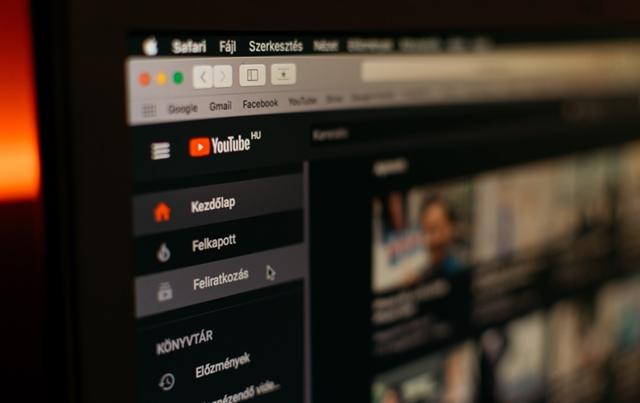
Understanding YouTube RPM Metrics: Optimizing Revenue for Content Creators
YouTube has become a lucrative platform for content creators to share their passion, knowledge, and creativity with the world. As the platform has evolved, so has its monetization strategy, with the introduction of the YouTube Partner Program (YPP) and various ad formats. Among the key metrics used to measure revenue potential on YouTube is RPM (Revenue per Mille). This article delves into the intricacies of YouTube RPM metrics, shedding light on its significance for content creators and YouTube's revenue model.
I. Introduction to YouTube RPM Metrics
Revenue per Mille, commonly known as RPM, is a crucial metric for understanding the earnings potential of a YouTube channel. It measures the average revenue generated for every thousand views of a content creator's videos. In other words, RPM provides insights into how much money a content creator can earn for every 1,000 video views, after YouTube's revenue share.
YouTube operates on an advertising-based revenue model. Advertisers pay to have their ads displayed on YouTube videos, and content creators receive a share of that revenue based on factors like ad impressions, click-through rates (CTR), and effective cost per mille (eCPM).
II. Understanding YouTube's Revenue Model
To grasp the significance of RPM metrics, it is essential to comprehend YouTube's revenue model and how content creators can monetize their channels.
A. YouTube Partner Program (YPP) and eligibility criteria
The YouTube Partner Program enables content creators to monetize their videos through advertisements. To qualify for YPP, channels must meet specific requirements, such as having at least 1,000 subscribers and 4,000 watch hours within the last 12 months.
B. Monetization options for content creators
Once eligible for YPP, content creators can choose from various monetization options, including display ads, overlay ads, skippable video ads, non-skippable video ads, bumper ads, and sponsored cards. Each ad format contributes differently to a channel's RPM.
C. Ad formats contributing to RPM metrics
1. Display ads
These are banner ads displayed on the right-hand side of the video player or below the video on desktop devices. They can be text or image-based and often have lower earnings compared to other ad formats.
2. Overlay ads
Overlay ads are semi-transparent ads that appear on the lower portion of the video. They can be closed by viewers but may interrupt the video-watching experience.
3. Skippable video ads
Skippable video ads allow viewers to skip the ad after the first five seconds. Creators earn revenue if the viewer watches at least 30 seconds of the ad or the entire duration if it's shorter than 30 seconds.
4. Non-skippable video ads
Non-skippable ads are mandatory and can appear before, during, or after a video. These often lead to higher earnings per view but might also negatively impact viewer retention.
5. Bumper ads
Bumper ads are short, non-skippable ads of up to six seconds. They are concise and less intrusive, making them an attractive option for advertisers and content creators alike.
6. Sponsored cards
Sponsored cards display content that is relevant to the video and may include products or services. Viewers can click on these cards to access additional information.
III. Components of YouTube RPM Metrics
To accurately understand RPM, it's essential to break down its core components, which include:
A. Ad Impressions
Ad impressions refer to the number of times an ad is displayed on a video. The more impressions a channel receives, the higher the potential revenue. However, an excessive number of ads might negatively affect viewer engagement and retention.
B. Click-through Rate (CTR)
CTR is the ratio of ad clicks to ad impressions. A high CTR indicates that viewers find the ad content compelling and are more likely to engage with it. YouTube rewards channels with higher CTRs by providing them with more targeted and potentially higher-paying ads.
C. Cost Per Click (CPC)
CPC refers to the amount earned by the content creator when a viewer clicks on an ad. Advertisers bid for ad space, and the CPC can vary based on the competition for a particular audience or niche.
D. Effective Cost Per Mille (eCPM)
eCPM is a metric that calculates the estimated revenue earned per thousand ad impressions. It allows content creators to compare different ad formats and optimize their ad strategy accordingly.
IV. Calculating YouTube RPM
RPM can be calculated using the following formula:
RPM = (Estimated Earnings / Total Views) x 1000
To illustrate the calculation, let's consider a hypothetical scenario:
- Estimated Earnings: $150
- Total Views: 50,000
RPM = ($150 / 50,000) x 1000 = $3
In this example, the RPM is $3, meaning the content creator earns approximately $3 for every 1,000 video views.
V. Factors Influencing YouTube RPM Metrics
Various factors influence a channel's RPM metrics, and content creators must understand these variables to optimize their revenue potential.
A. Audience demographics and geographic location
The location and demographics of a channel's viewers can significantly impact RPM. Audiences from certain regions or with specific interests might attract higher-paying ads, resulting in a higher RPM.
B. Content type and niche
The type of content produced and the niche it caters to can influence the demand from advertisers. Niche topics with a dedicated audience might attract premium advertisers, leading to increased RPM.
C. Seasonality and trends
Ad demand can fluctuate based on seasonal trends or events. Content creators might experience variations in RPM throughout the year.
D. Viewer engagement and retention
High viewer engagement, longer watch times, and increased viewer retention can positively impact RPM by attracting more targeted and relevant ads.
E. Advertiser demand and bidding
The level of competition among advertisers for a specific target audience can affect CPC and ultimately RPM. Competitive niches often lead to higher earnings for content creators.
VI. Analyzing and Improving RPM Metrics
To optimize RPM and boost revenue, content creators should employ data-driven strategies:
A. YouTube Analytics and Revenue Reports
Regularly monitoring YouTube Analytics and Revenue Reports can provide valuable insights into the performance of individual videos, ad formats, and viewer behavior.
B. Identifying underperforming videos and content
Analyzing RPM for each video can help identify underperforming content. Creators can make data-driven decisions on whether to improve, update, or remove such videos.
C. Strategies to increase RPM
1. Optimizing ad placements
Strategic ad placements can enhance viewer experience while maximizing ad revenue. Placing ads at natural breaks or engaging moments can improve CTR and overall RPM.
2. Improving video quality and engagement
Creating high-quality, engaging content can increase watch time and viewer retention, enticing advertisers to bid higher for ad space.
3. Attracting higher-paying advertisers
Content creators can focus on producing content that appeals to premium advertisers and caters to high-value niches.
4. Diversifying revenue streams
Relying solely on ad revenue might limit a content creator's earnings. Exploring alternative revenue streams, such as brand partnerships, merchandise sales, or crowdfunding, can supplement RPM metrics.
VII. RPM Best Practices for Content Creators
To thrive in the competitive YouTube ecosystem, content creators should implement the following best practices:
A. Creating valuable and relevant content
Quality content that resonates with the target audience is more likely to attract higher engagement and retention, leading to increased RPM. Understand your audience's preferences and interests, and strive to deliver valuable and informative content consistently.
B. Building a loyal and engaged audience
Engage with your viewers through comments, community posts, and social media platforms. A strong, loyal fan base is more likely to support your channel by watching, liking, and sharing your videos, which can positively impact RPM.
C. Staying updated with YouTube's policies and guidelines
YouTube's policies and guidelines can change, affecting how ads are displayed and monetized. Stay informed about any updates to ensure compliance and maximize your revenue potential.
D. Leveraging social media and promotion
Promote your videos and channel on various social media platforms to expand your reach and attract new viewers. The more people watch your videos, the more ad impressions you'll receive, potentially increasing your RPM.
VIII. Conclusion
Understanding YouTube RPM metrics is crucial for content creators seeking to monetize their channels and optimize revenue. RPM provides valuable insights into the performance of a channel and its ability to attract higher-paying ads. By comprehending the components of RPM, analyzing factors influencing it, and implementing data-driven strategies, content creators can enhance their earnings potential.
Creating valuable and engaging content, building a dedicated audience, and exploring diverse revenue streams are vital steps in increasing RPM and overall channel revenue. Consistent monitoring of YouTube Analytics and Revenue Reports empowers content creators to make informed decisions and adapt their strategies to the ever-changing landscape of YouTube's revenue model.
In conclusion, as YouTube continues to evolve as a platform for creative expression and financial opportunities, content creators should remain proactive in optimizing their RPM metrics. By staying committed to producing exceptional content, fostering audience engagement, and adapting to industry trends, content creators can thrive on YouTube while maximizing their revenue potential. Remember, RPM is just one piece of the puzzle – building a successful channel requires dedication, passion, and a deep understanding of your audience's needs and preferences. So, go ahead, create captivating content, and unlock the full potential of your YouTube channel. Happy YouTubing!


